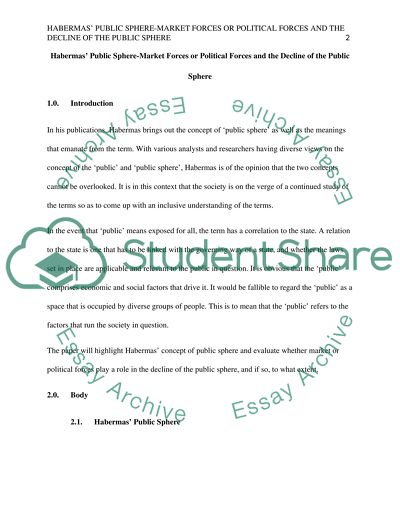Cite this document
(“Habermas Public Sphere-Market Forces or Political Forces and the Essay”, n.d.)
Retrieved from https://studentshare.org/journalism-communication/1461804-habermas-public-sphere-market-forces-or-political-forces-and-the-decline-of-the-public-sphere
Retrieved from https://studentshare.org/journalism-communication/1461804-habermas-public-sphere-market-forces-or-political-forces-and-the-decline-of-the-public-sphere
(Habermas Public Sphere-Market Forces or Political Forces and the Essay)
https://studentshare.org/journalism-communication/1461804-habermas-public-sphere-market-forces-or-political-forces-and-the-decline-of-the-public-sphere.
https://studentshare.org/journalism-communication/1461804-habermas-public-sphere-market-forces-or-political-forces-and-the-decline-of-the-public-sphere.
“Habermas Public Sphere-Market Forces or Political Forces and the Essay”, n.d. https://studentshare.org/journalism-communication/1461804-habermas-public-sphere-market-forces-or-political-forces-and-the-decline-of-the-public-sphere.


